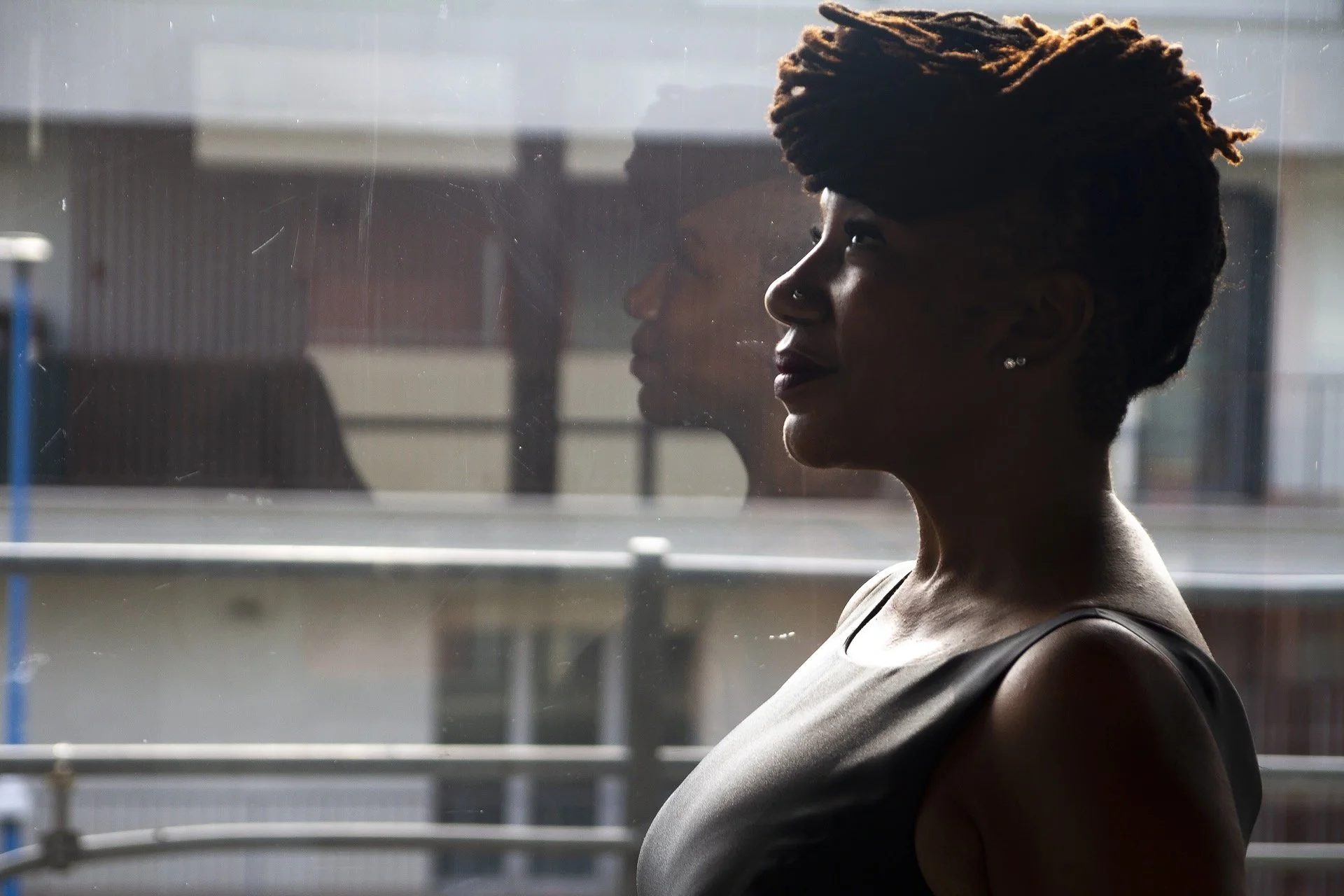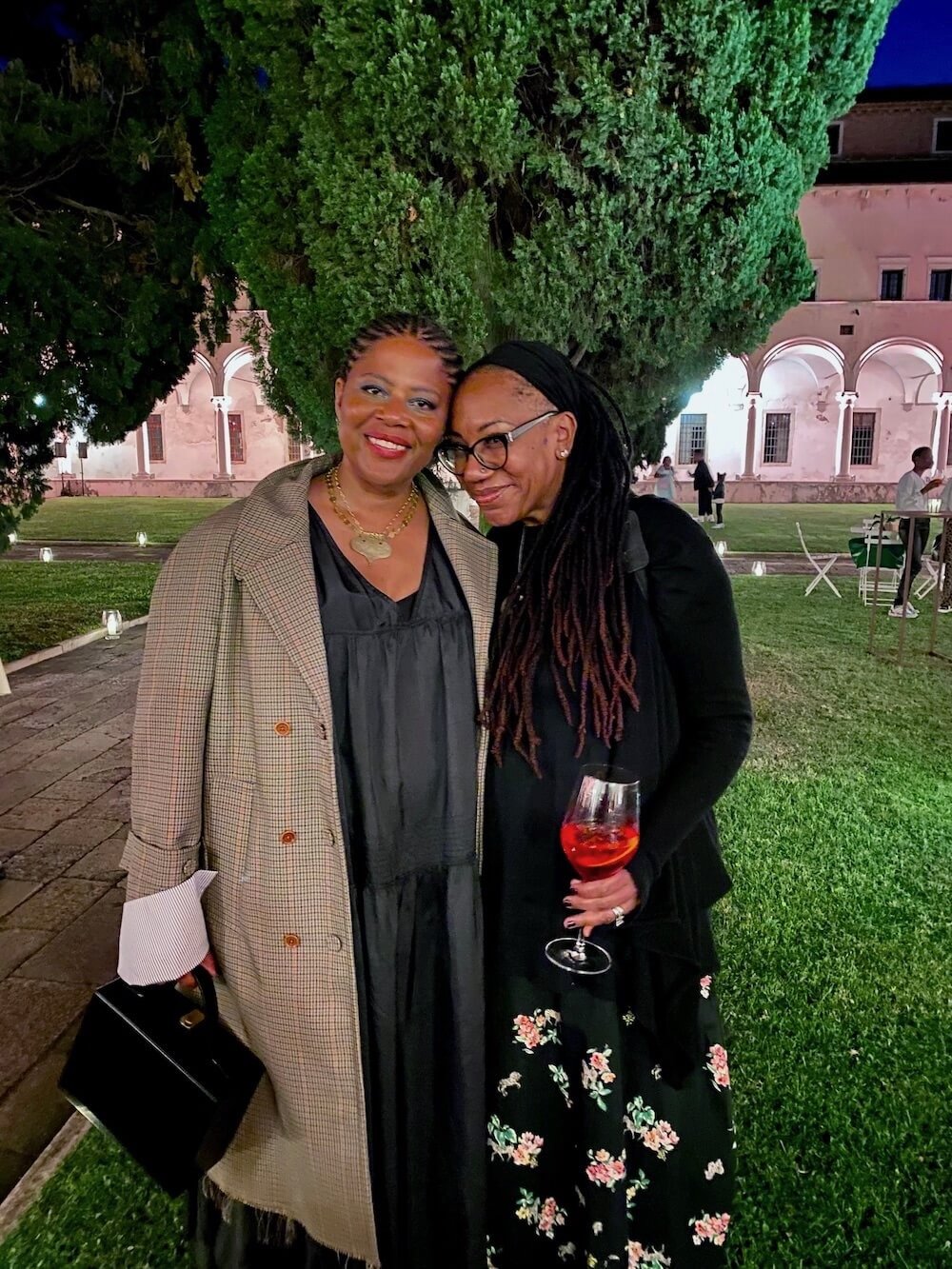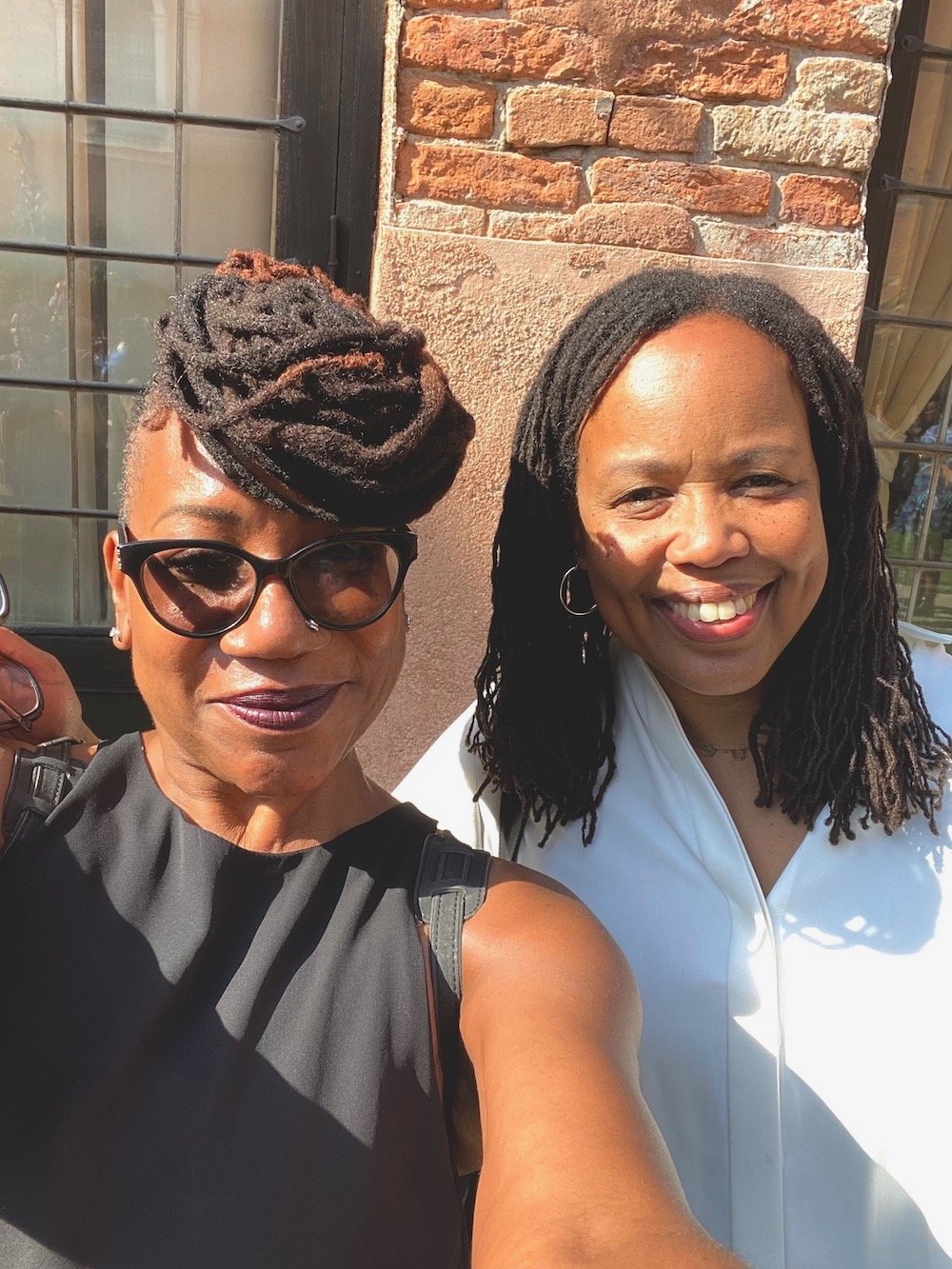I’ve lived in Italy for 25 years, finally letting some roots take hold after wanderlusting my way through my twenties. Chasing the music. The South of France and the north, Amsterdam and the Caribbean, Central America, and on down into South America. Whenever I saw an interesting American sister, I felt giddy with the excitement of speaking with someone from home. The shared cultural history is a shorthand for connection. As a transracial adoptee, it’s a connection that I think I’ve unconsciously been searching for forever.
In 2012, Meshell Ndegeocello gave a stunning performance in Milan at the now-defunct club Salumeria della Musica and then mingled with the crowd. An intimate space with walls painted black and small tables crowded together. It was packed, and once Meshell was there no one had any intention of leaving. In a minute, she was surrounded by Italians asking, “Per favore, puoi firmare questo?” All of them thrusting their Weather CDs at her beseechingly. People clamored for photos and I appointed myself as her translator. I simply hoped some of Meshell’s uber je ne sais quoi coolness would rub off on me.
Ten years later, Black and brown women descended on Venice en masse. Simone Leigh’s historic appointment as the first Black woman to represent the U.S. at the Venice Biennale in its 127-year history was the natural next step in her already illustrious career. The Loophole of Retreat: Venice, curated by Rashida Bumbray with advisers Tina Campt and Saidiya Hartman, took place from October 6-9, 2022, and it was glorious. Simone Leigh's invitation for me to present some pieces from my upcoming album felt like a homecoming before I even arrived. The zoom meetings with Rashida Bumbray and her team were warm, welcoming and full of affirmation. To have been invited and folded into this gathering of Black excellence was poignant for me on every level.
But I was only one of the women invited into this space.
Photo: (left to right) Simone Leigh and the author. Photo credit: Symposium attendee
The symposium included sixty performances from the African and Black Diaspora—lectures and presentations from eight countries and some twenty-eight cities. Many are multi-disciplinarians. Talks from multi-media artist Phoebe Boswell, whose layered work held an astonishing depth of research, and poet, novelist, and essayist Dionne Brand, whose philosophic read from her new work Nomenclature for the Time Being had us enthralled by the language. The performance of American Woman by dancer Holly Bass to the ringing soundtrack of Black American activists Angela Davis and Shirley Chisholm had us leaning forward to claim the silvery notes of Aretha and Nina, among others. Bass’s use of a simple scarf to render their words and music palpable transported us with wit and mischief in a celebration of that herstory. And then there was the remarkable insight of poet/professor Aracelis Girmay who helped us understand “the mother tear” and its impact over generations.
Photo: (left to right) Author LMS and Saidya Hartman. Photo credit: LMS
I wish there were space to honor each feminist that took to the stage. The ripples from the conversations hovered visibly above the canals. The lectures, performances, and new friendships will no doubt inspire countless new works and collaborations. Every corner I turned there were Black women, heads bent intently towards one another, listening deeply.
Both the initial symposium held at the Guggenheim in 2019, and this second iteration envisioned by Simone, were inspired by Harriet Jacob’s “Loophole of Retreat,” a chapter that sits squarely in the center of her autobiography Incidents in the Life of a Slave Girl. Harriet’s loophole was a literal as well as a symbolic space in her grandmother’s attic, hastily built under the eaves to facilitate her escape from an enslaver who was unrelenting in his sexually predatory behavior. He had also threatened to send Harriet and her children to a distant plantation to work as field hands. The transfer came with the risk of an even more precarious existence, one that could lead to separation or death at the pale white hands of someone unfamiliar and unpredictable. The attic is where Harriet lay hidden for seven years. Initially pitch dark, with no room to sit or stand, she used a small tool, a gimlet, to bore three tiny holes creating a loophole allowing her brief glimpses of her children. It was a distinct torture to see them without being able to interact with them, yet it was also a small comfort. The three tiny holes also allowed her access to the speculations of white Southerners. She observed them without having to bear their scrutiny.
One of the lasting impressions of the autobiography of Harriet Jacob is that the reader is not focused solely on her trauma, but on her ingenuity. Her time in that small garret was just one example of the resourcefulness she employed throughout her life. That garret served as both a physical and metaphysical space where Harriet was able to carve out an existence free from the ire of her enslavers. This paradoxical space where she was simultaneously trapped, and yet free enough to imagine and create her family’s future, is a powerful metaphor Simone uses as the impetus for her symposium. Harriet, hidden within view, read, sewed, and wrote her story. Her intellectual and creative labor would elevate the lives of both herself and her children when she was eventually able to secure their freedom and repair “that mother tear.”
Aracelis Girmay told us, “I have spent the past several years wondering what would’ve happened had my great grandmother lived. Had she not passed when my grandmother was so little, about four. The oldest of my great grandmother’s seven living children was seventeen and the youngest, the twins, about two. I have been thinking so much about that mother tear and also the refuge of our home now, the wellness of the children. What makes that possible?”
I reread Harriet’s account as I prepared to preview a few pieces from a new poetic/musical album at the Loophole of Retreat: NoteSpeak 12. I personally found Harriet’s book to be as painful as it was inspiring. Like Harriet’s children, and countless others in the antebellum south, I was separated at birth from her mother. When I found my birth mother in Louisiana, I began learning about my antecedents. I felt the sighs of ghosts all along that stretch of highway from Louisiana to Tennessee: my grandmother Laura Bernice, my great-grandmother Melissa “Mama Pet”, and my great-great-grandmother Lula Riggs, an enslaved woman.
Photo: Lulu Riggs. Photo credit: Gwendolyn McShepard’s ‘zine
What struck me was the joy I found in performing for my sisters in Venice. Many of the presenters at Loophole use very personal, intimate details of their lives to speak to the issues of the day. It is often a daunting task. I wrote for Huffpost about the discovery that my adoptive grandfather was a member of the KKK in Colorado during the twenties. Though the work was less about my adoptive grandfather and more about the rampant racism that lies beneath the Boulder bubble, it did not sit well with some of my adoptive family.
My childhood in Boulder, Colorado, raised as the adoptive daughter of a white woman and a Black man who had swallowed the white supremacy spoon-fed to us, meant that I grew up with no cultural touchstones of my Blackness. Few representations of Black womanhood were found in our home. No paintings, no knowledge of “What to do with this hair?” Luckily there was the local library where I finally found authors that taught me about Black love and history. Their words were full of nutrients and I devoured them as if I were finally seated at a southern table full of grits, red beans and rice, jambalaya, and collard greens. I had healthy portions of Morrison and Angelou, Walker and Hooks, and so many more.
I formed many “girl crushes” on the women present at the Loophole. I had already venerated a few for years, from all the way back to those delicious days in the Boulder Public Library as I searched for my identity. Others seduced me with their intellect and artistry at the symposium. I keep returning to Tina Campt’s words “I’ve spent the first part of this week thinking with a group of friends and radical coconspirators called the Practicing Refusal Collective. We’ve been talking about what it would mean to create a vocabulary that thinks from Blackness. Taking Blackness as its origin and its source of inspiration. We’ve been thinking about how to define a set of terms for living Blackness boundlessly, beyond all limitations. Something some might call living Blackness as freedom.” That idea of living boundless lives, unconstrained and unlimited by the strictures of what our white supremist society would seek to impose upon us. It seemed to me that this is the life that these talented women all adhere to.
Photo: (left to right) Angela Tucker, Sherrilyn Ifil, the author. Photo credit: Symposium attendee
Sherrilyn had me doubled over in laughter as we walked from our hotel to Simone’s exhibition, Sovereignty. It was Day two of the symposium and practically every Venetian that we encountered kept telling us that our every destination was just a ten minute walk away. We lost track of time at breakfast and suddenly realized we were late for our meet up with Angela Tucker. We jumped up from the table and hustled over to the concierge who assured us that we didn’t need a taxi, it was just ten minutes away! We rushed, crossing bridge after bridge. Sherrilyn had me in stitches after twenty minutes of race walking. “It’s just up here, just a quick walk.” “Why would you take a taxi, what are you lazy?” she deadpanned. I was bent double on the bridges of Venice, surrounded by more Black and Brown faces than I had ever seen before in any Italian city in the 25 plus years I’ve been based here. Tears streamed from my eyes as I begged her to stop. But our mood would shift just a few hours later when we came face to face with a racist.
I’ll use as few words as possible to describe him. He was tall, thin, red-faced with white hair, apoplectic at our presence. Sherrilyn, Angela, and I were heading back to the Fondazione Cini. We were rushing after taking our sweet time at the exhibition. I saw this man and his wife heading to a water taxi and asked if we might share it with them. He spit. “No, we aren’t going anywhere near where you’re headed.” Angela approached him slowly and carefully like a wild animal in the woods. He pushed the women with him towards the taxi without meeting our eyes, desperate to get away. I was uncharacteristically impatient and pushed back, ”How do you know where we’re going?” Sherrilyn watched with keen eyes narrowed and shook her head. Then we left it behind on the shore. Normally, I would have chewed over the encounter for days and written a song, a poem, or an entire essay about it. I would have tortured myself with thoughts of what I should have done differently. Depending on my mood, tore him a new one or made the most of a teachable moment, hoping that something would resonate with him later. Instead, we found some allies who ordered us another water taxi. We climbed aboard and kept laughing. Sherrilyn waved to us like the queen she is once Angela and I had hopped off the boat back at the Cini Foundation, where the Loophole was hosted.
On the third and final day, poet Aracelis Girmay stood at the podium and spoke to two of the fundamental aspects of most of the participant’s work. The legacy for our children and the red river stream that connects us all to the back and back and back.
She began by quoting Audre Lorde. “Our children cannot dream unless they live, they cannot live unless they are nourished, and who else will feed them the real food without which their dreams will be no different from ours?” Then Girmay shared a multi-media presentation that included the glorious sounds of children at play.
Each part of Girmay’s presentation was marked with a one “representing a stitch, a repetition.” What a vibrant quilt she weaved with her words.
“I saw my six words and their ghosts and the mother’s nodding from beneath the pepper tree and a well at the center of the yard of my heart.”
“[A]nd like that was taught by my elders to lift sorrow out from my sorrow.”
She speaks of the teaching she gifts her children
“[T]hey know this now. The more-than-you-can-see.”
The teaching her mother gifted her.
“She’d spend weeks painting a single face on a single husk. What stillness of spirit to watch her work.”
The teaching that I longed for throughout my childhood while simultaneously growing the callus upon the wound that would allow me to live a productive life. Not until my birth mother rocked me in a bed in Tennessee with my head on her chest and her hands rubbing my scalp did I realize that the tear had never fully healed. In that moment I was able to acknowledge the pain of that separation, the unknowingness. I fell into the most restorative sleep there by her side. Like Girmay I wonder, what my life would have been like without that tear. The murmured recognition in that theater let her know that she pressed on bruises that her listeners recognized.
Girmay was mesmerizing, and I saw my tears reflected on the faces around me as we rose to celebrate her with a standing ovation.
We were electric in our collective communing. We meditated, hummed, wept, celebrated, and cheered one another. Born on the well-spring from which we originate, we continue bringing pressure to bear, birthing tributaries to carry on the flow, ever ready to sustain those who follow.
Yes, it was glorious.

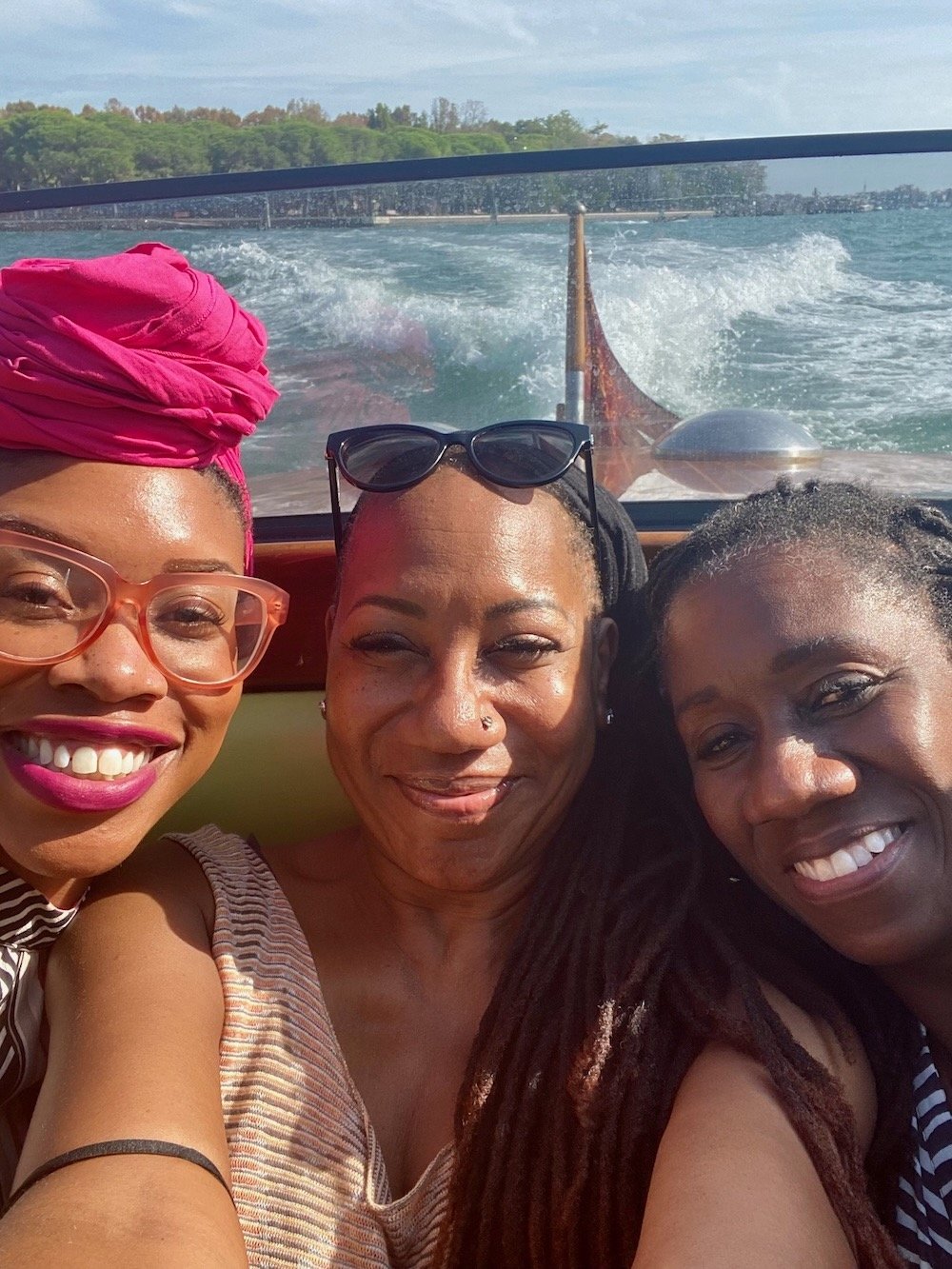

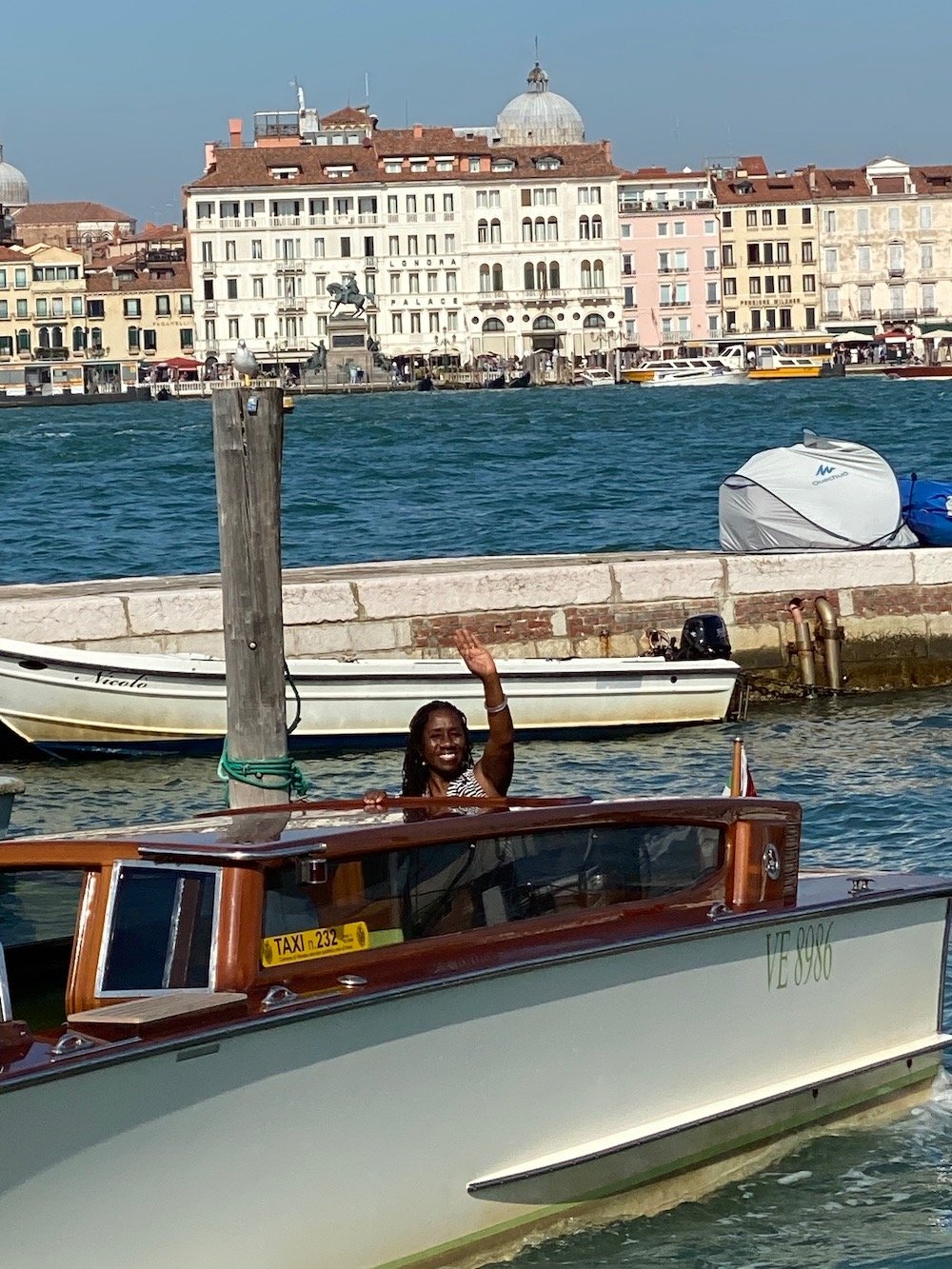
Contributor Notes
Lisa Marie Simmons is a multi-disciplinary storyteller. She is a singer/songwriter (Ropeadope Records), essayist (Huffington Post, Family Stories Project, Chicken Soup for the Soul, AfroElle), and published poet. Simmons was a speaker & performer at the 70th Conference on World Affairs at the University of Colorado in April 2018. In November 2019, she presented NoteSpeak (Amore e Tragedie in Musica) in Europe. In January 2020, Simmons presented NoteSpeak in India on the Jaipur Music Stage. Ropeadope released her poetic/musical album NoteSpeak (Amori e Tragedie in Musica) in March 2020, which received a four-star review from the iconic Downbeat magazine. In October 2021, she flew to Florida searching for her birth father with Angela Tucker and her Emmy Award-winning husband, Bryan Tucker. They shot a documentary that premiered in June 2022. Ropeadope also released her jazz standards album, Lisa Meets Gianni, with the legendary Gianni Cazzola in June. Angela and Lisa co-wrote an essay advocating for the rights of Black fathers for the Harvard Law Bill of Health digital symposium in May 2022. Lisa was invited to perform at the Biennale in Venice in October 2022 for artist Simone Leigh's Loophole of Retreat. The poem “Last Supper” was shortlisted for a Creators of Justice Literary Award in November 2022. Her new album NoteSpeak 12 will be released by Ropeadope in February 2023.

